Iranian-Born Artist Amir H. Fallah Creates Work That Thrives In A Cultural Limbo
By Rand Al Hadethi
07 April 2020

Fallah creates work with stupefying subtext
The 40-year-old artist paints idiosyncratic portraits that unfurl infinite narratives to his audience. Ask him, and he explains that his detail-rich, colour-drenched paintings are a new kind of portrait, one that shows a person without physicality at all. More often than not, these portraits – usually created in close collaboration with his subjects – forego face and skin tone, and instead allow a Garfield plushy or goblet drum to tell the tale.
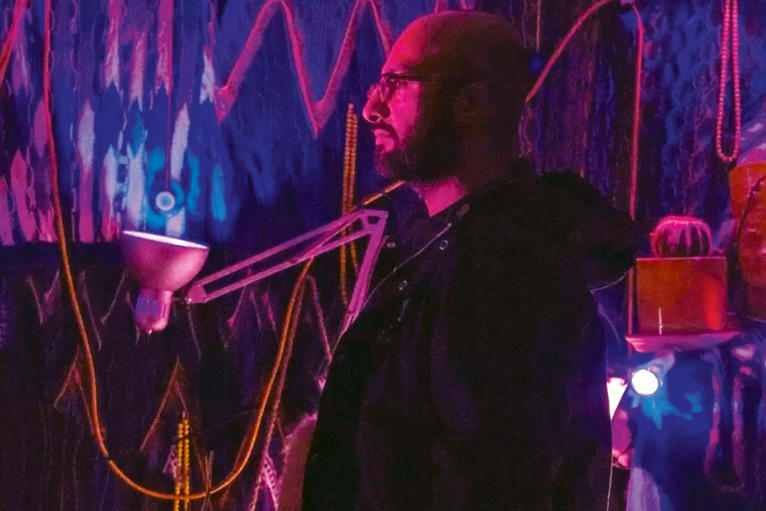
Nodding at influences from Persian carpets to Los Angeles graffiti to iconic comic book cats, Iranian-born artist Amir H. Fallah creates works that thrive in a cultural limbo. At first glance, they strike you. At second glance, they provoke you. At the third, they echo a ballad.
And it’s then that the real thing about Fallah’s work strikes you: the fact that subjects – often veiled entirely – can feel so personal, and so intimate, without seeing a face or body. The theme echoes equally as powerfully in his large-scale installations, which have included audio recordings of his parents describing their immigration to the United States, a surreal dreamscape of a post-surgery recovery room, and a tribute to the late painter, Henri Rousseau.
Fallah’s works, though often playful, weave together themes of race, trauma, inherited culture, and the diasporic experience – seeking the identity society fails to see when blinded by ethnic prejudice. His cultural collages live in harmonious contradictions, much like diaspora does. And this is where the magic happens. This is where fact and fiction are fabricated.
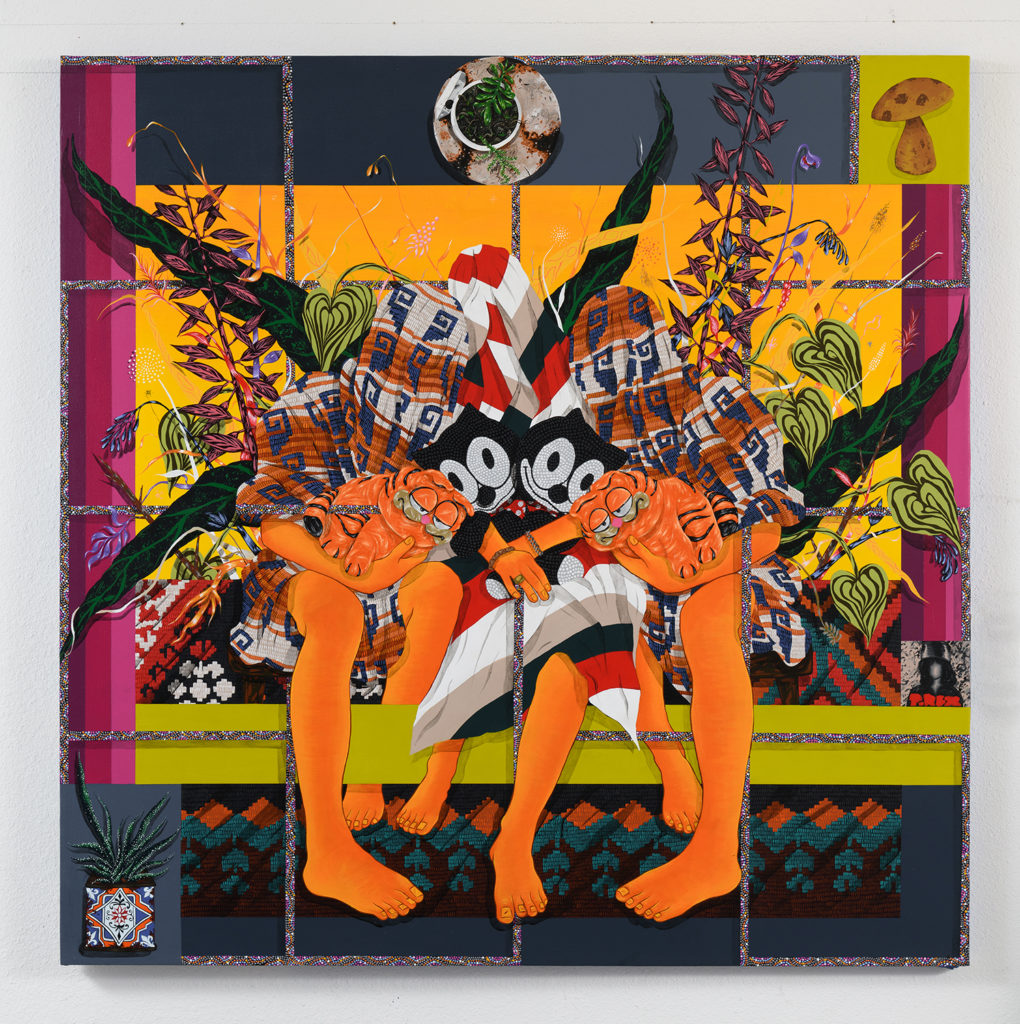
Incorporating sometimes mundane items into fantastical and imaginative scenarios is something that strikes me about your art. What led you to creating that style?
I get to know my subjects on a very intimate level. Each painting starts with a visit to their home where I conduct an informal interview of sorts. We walk from room to room and I pick up objects that catch my eye and ask them about it. A quilt that was made for them by their grandmother could start a discussion about their relationship with their family. Each object is charged with a memory, story, and history. I take those stories and incorporate them into the works through a variety of symbols. I think of the paintings as a portrait through the debris of life and the research is almost like an archaeological dig of someone’s life.
What were your major influences and inspirations?
My inspirations run the gamut from high to low, old to new, minimal to maximal. I’m just as inspired by minimalist painting as I am of vintage graphic design and illustration. I’ve always been a curious person and my curiosity makes for a combination of images that usually don’t go together. In my mind, an ancient Persian miniature holds the same weight as a 1980s Powell Peralta skateboard graphic. They are both important to me and can live within the same painting.
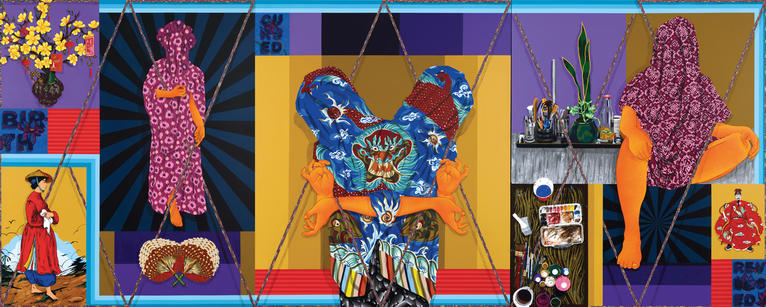
The idea that someone’s superficial qualities do not equate identity is a key motif in your work. How and why did you decide on removing your subjects’ ethnicity from your works?
I lived in four countries before the age of six. I never felt like I belonged to one culture and have always felt like a cultural hybrid. I’ve lived in Los Angeles for the last 20 years and Mexican culture is a major part of my life even though I am not Mexican. I don’t truly feel at home in any one place – so I pull and draw inspiration from everywhere.

In your fragmented portraits, where does your Persian heritage find its place?
There’s many references to my Iranian heritage in the works. I draw a lot of inspiration from Persian miniatures. Not just depicting the figures in the works but also the flattening of space, ornate borders, and the patterning. I also think quite a bit about the decorative legacy of Iranian culture. Iran’s Mosques and historic buildings are covered in ornate patterns, colours and carvings, and this comes into my work although through a Western colour sensibility.
I’m a third-culture kid: Iraqi, born in Malaysia, speaking Lebanese. I haven’t found a “proper” home in any of these places. Do you ever feel a “cultural gap” being a Persian raised in the States?
Yes, I definitely feel a cultural gap. I have the benefit of having some distance from cultures. It allows me to see some aspects of cultures that are not positive. When you come from only one culture you naturally think your culture is the best. Having distance helps me put things in perspective. I’d like to think that I take in the best aspects of all the cultures I’m exposed to and abandon those that don’t fit my world view. It’s liberating.
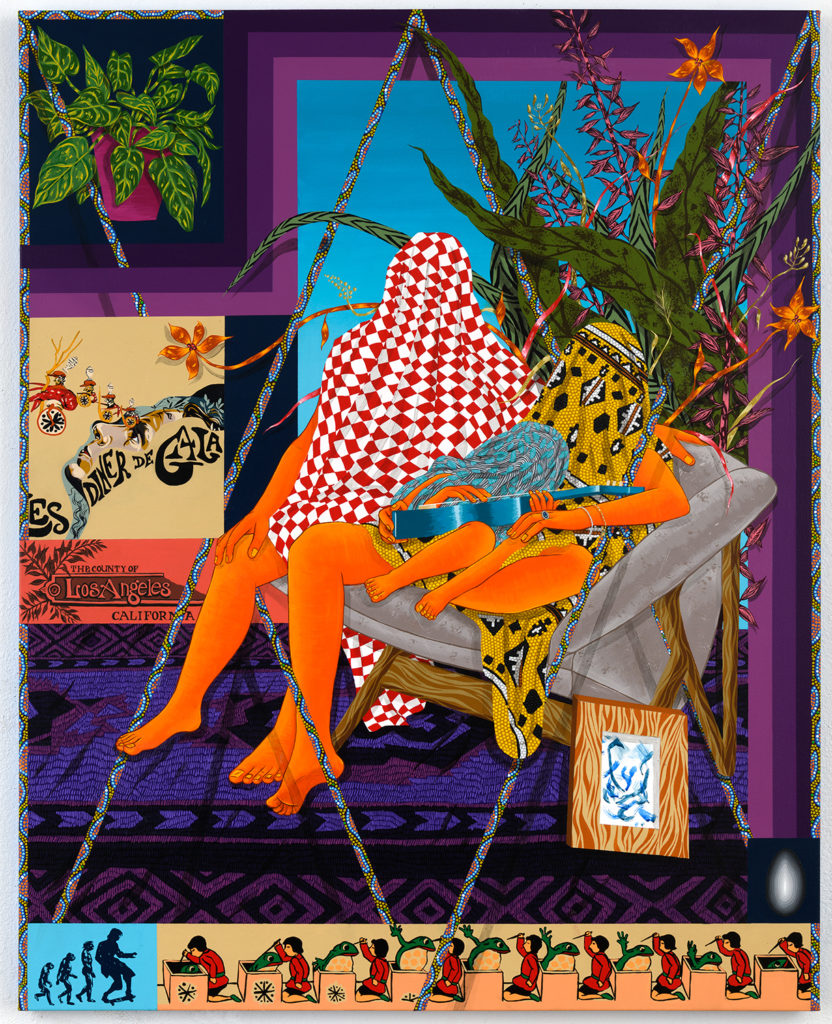
Your art explores the depths of who the people around us might be, but on a more selfish note, does your art satisfy your cultural gap? Does it give you a greater sense of “home” or being?
Not sure if I would call it a “home”. At the end of the day I have a daily need to make art and I decided a long time ago to only make work that comes from a sincere, authentic place. I only can speak of my own experiences so that’s what I do and hope that others find it of some use.
As someone who lives in a blend of cultures, do you find empowerment in your art?
Making the work helps me clear my thoughts about the world. It’s not always empowering. But the act of making work is, at times, therapeutic.
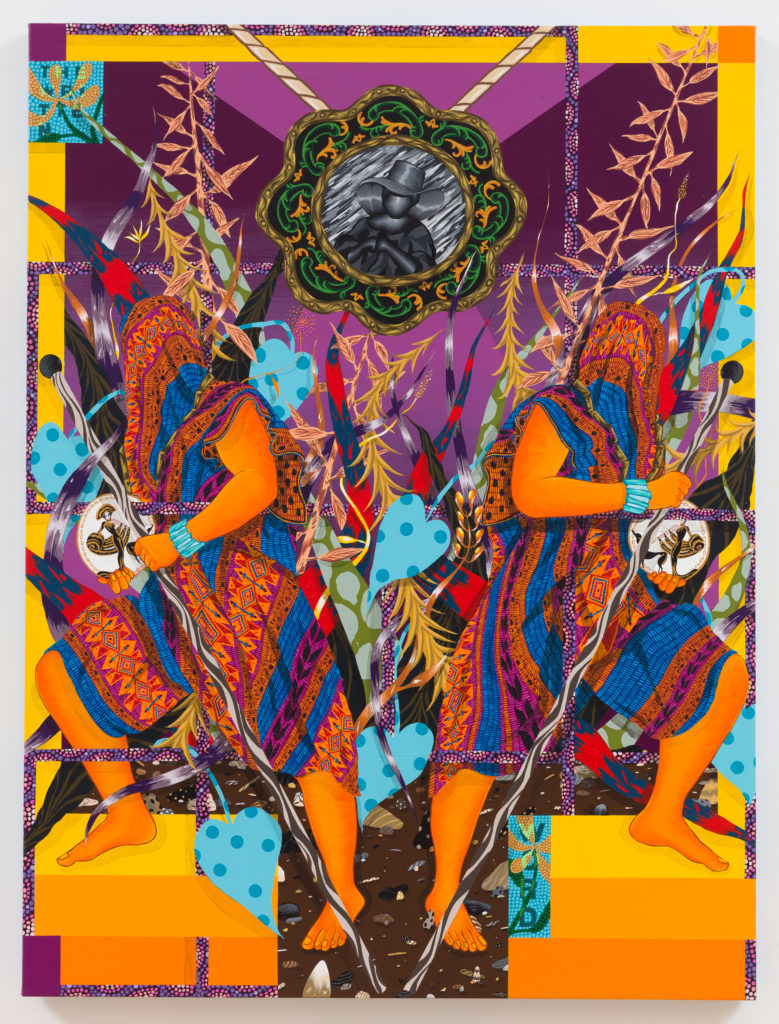
Your pieces are layered in subtext – the closer we look, the more complex they appear to become. How do you want your audience to approach your art? How do you want them to analyse your art?
I want the work to unravel over time. All of my work is dense and is layered both formally and conceptually. I’d like to think that the more time you spend with it, the more it gives.
Amir H. Fallah recently won the Art Prize in the 2020 Artadia in Los Angeles. His latest solo exhibition at the Museum Of Contemporary Art in Tucson, Arizona is running until May 3
